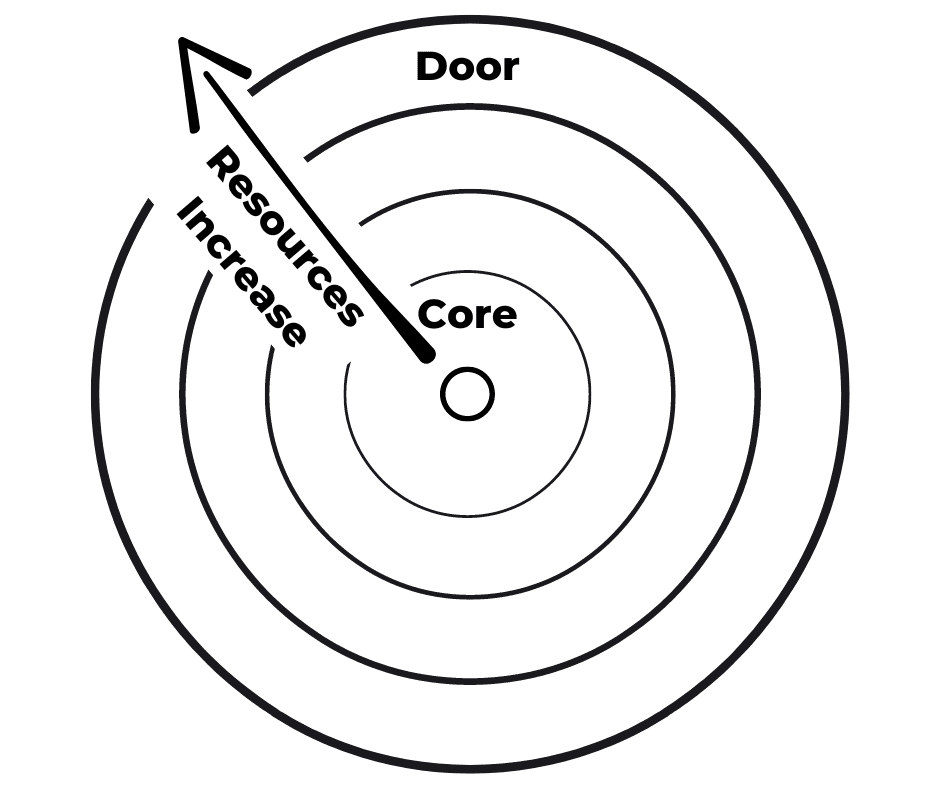The TOXIC Volunteer Cycle (EDITed) (add image of the actual cycle)
Are you struggling to get new volunteers, because your current volunteers never seem to stay for long?
As your ministry grows, the day-to-day tasks that keep it running become overwhelming for the ministry staff to do alone. This is when you will need high-performance volunteers to help carry the load.
However, volunteers that are not dependable will actually make the load heavier. When they don’t show up, their responsibilities will fall back on you. This will quickly make the workload of church leaders unsustainable.
In fact, the amount of pressure that this adds to your position is one of the main drivers of pastor burnout.
If you can’t find a way to resolve the exhaustion, toxic stress, chaos, and endless hours of additional work, you’re going to break under the workload.
Recall our beliefs about scarcity from earlier. Too much of this can lead pastors to shift from a mindset of abundance (we have what we need) to a mindset of scarcity (we don’t have what we need).
When this happens, the ministry team begins to focus inward, asking self-centered questions that are focused on meeting the needs of the ministry. This sets a toxic cycle that is the destroyer of ministries.
To solve this volunteer problem, let’s begin by looking at what most ministries are doing to get more volunteers that ISN’T working.

Step 1: The Front Door
The toxic volunteer cycle begins with a ministry team who hasn’t met its own needs. Team members feel exhausted, stressed, and frustrated. They believe they don’t have the resources they need to succeed. In these conditions, ministry leaders allocate a large amount of resources to meet people at the door. The typical thought process goes something like this: “In order to get them to the core of my ministry, I must make a great first impression at the door of the church“. So leaders spend a lot of time and effort to greet people on Sunday mornings. They send staff to run the connect booth. Pastors write follow-up emails and texts to make new visitors feel cared for. And when visitors do feel cared for, they decide to stay at the church.
Step 2: The Volunteer Pitch
The need for volunteers and the desire to bring these people to the core of their ministry naturally brings ministry leaders to step two. They approach some of their new visitors/members and ask them to volunteer. After all, it would be a great service to the pastor’s ministry and the kingdom if they volunteered. Some of the new visitors and members agree to help, becoming volunteers.
Step 3: Volunteer Dissatisfaction
After a while, the volunteers end up disinterested, unreliable, disgruntled, or just burnt out – and they quit showing up. This can begin slowly and progress until they are entirely disengaged from the ministry. During this time of escalating inconsistency, ministry leaders will feel more and more uncertain each week, not knowing what fires they will have to put out at the next event.
Step 4: Pastoral Panic & Repeat
As the volunteer problem spirals out of control, ministry leaders begin to panic under an unsustainable workload. What will they do to solve it? They send resources back to the front door, looking to find people who are willing to volunteer. The belief here is that more volunteers will solve the ministry’s problems. In reality, more volunteers only kick the can of ministry unsustainability down the road a little further.
When more volunteers sign up, the TOXIC volunteer cycle repeats.


Leave a Reply